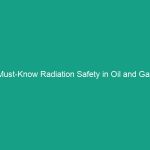Good Morning Team!
Today, we’re diving into an important topic that affects us all—skin cancer due to sun exposure risks. As we work outdoors or in environments where sun exposure is a concern, it’s critical to understand how to protect ourselves and our colleagues. By the end of this Toolbox Talk, you’ll have a clear understanding of the risks and the essential guidelines to prevent skin cancer.
Understanding Skin Cancer and Sun Exposure Risks
Skin cancer is one of the most common types of cancer, primarily caused by excessive exposure to ultraviolet (UV) radiation from the sun. It can occur in any area of the skin, but certain parts, like the face, neck, and arms, are more susceptible due to higher exposure. In our workplace, where many of us are outdoors, understanding these risks is vital for our health.
Many people believe that getting a tan is safe or that sunburns only happen during peak summer months. However, UV rays can affect us year-round, even on cloudy days. It’s crucial to recognize that sun exposure is cumulative, meaning that each time you’re exposed, even in small doses, adds up over the years.
Key Hazards, Risks, and Safety Considerations
When it comes to sun exposure, the risks are not just about immediate sunburns; they extend into long-term health implications, including:
- Skin Cancer: The most significant risk associated with UV exposure. There are three major types: basal cell carcinoma, squamous cell carcinoma, and melanoma, the latter being the most deadly.
- Premature Aging: UV radiation can lead to wrinkles, sun spots, and a leathery skin texture.
- Eye Damage: Prolonged exposure can lead to cataracts and other eye issues.
Ignoring these risks can lead to severe health consequences, affecting not just your work performance but your quality of life. It’s essential to take these Hazards seriously to protect ourselves and our coworkers.
Best Practices, Procedures, & Actionable Advice
So, what can we do to prevent skin cancer due to sun exposure? Here are some essential guidelines to follow:
1. Wear Protective Clothing
Choose clothing that covers as much skin as possible. Long-sleeved shirts, long pants, and wide-brimmed hats can significantly reduce exposure. Consider clothes made from UV-protective fabrics.
2. Apply Sunscreen Regularly
Use a broad-spectrum sunscreen with an SPF of at least 30. Apply it 15 minutes before going outdoors and reapply every two hours, or more often if sweating or swimming.
3. Seek Shade When Possible
Whenever you can, find areas with shade, especially during midday hours when UV rays are strongest (typically between 10 a.m. and 4 p.m.).
4. Schedule Regular Skin Checks
Regularly check your skin for any changes, such as new moles or changes in existing moles. If you notice anything unusual, consult a healthcare professional.
5. Educate and Encourage Others
Share these guidelines with coworkers. The more we discuss and emphasize sun Safety, the more we can protect each other.
Case Studies
Let’s look at a real-world example. In 2020, a crew working on an outdoor construction site neglected sun safety protocols. Several workers suffered severe sunburns, leading to days off work and medical bills. Following this incident, the company implemented mandatory sun safety Training, which has since reduced incidents by over 50%.
Regulations, Standards, and Compliance
OSHA and other regulatory bodies emphasize the importance of protecting employees from sun exposure risks. Compliance with safety Standards is not just a legal obligation but a moral one. Employers are responsible for providing the necessary resources, training, and support to ensure worker safety.
By adhering to these Regulations, we not only protect ourselves but also contribute to a safer workplace Environment for everyone.
Employee Engagement & Discussion
Now that we’ve covered the essential guidelines, let’s open the floor for discussion. What safety challenges have you encountered related to sun exposure? How can we improve our practices? Your input is invaluable in creating a safer workplace.
Conclusion & Key Takeaways
In summary, preventing skin cancer due to sun exposure requires awareness, proactive measures, and a commitment to safety. Remember to wear protective clothing, apply sunscreen, seek shade, schedule skin checks, and educate others. Together, we can create a safer work environment.
Thank you for your attention and commitment to safety. Let’s prioritize our health and well-being as we continue to work together!


